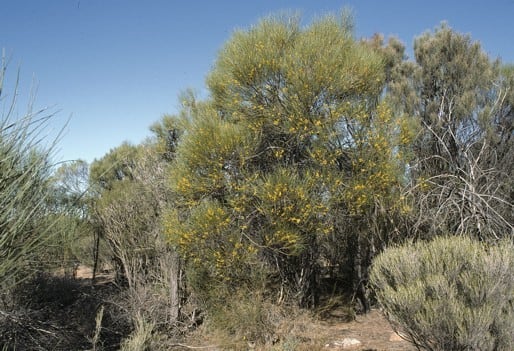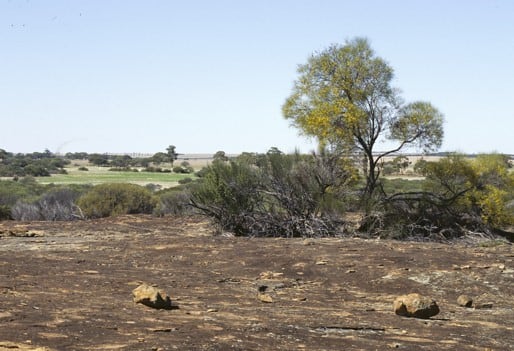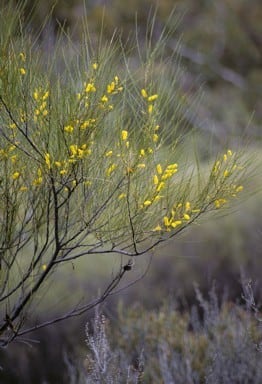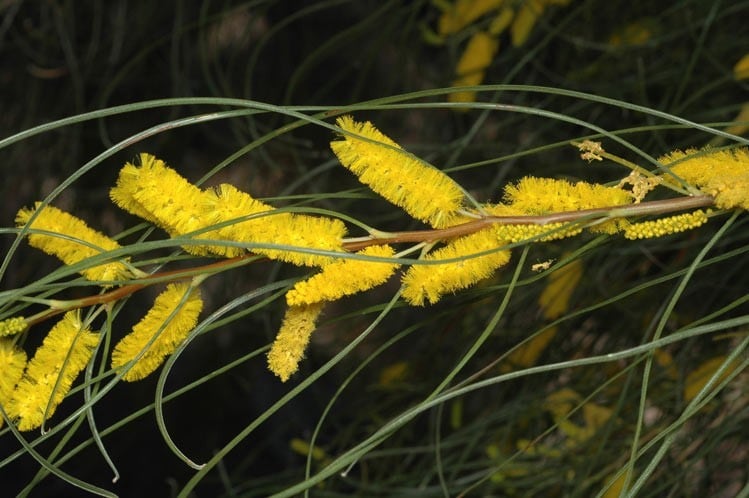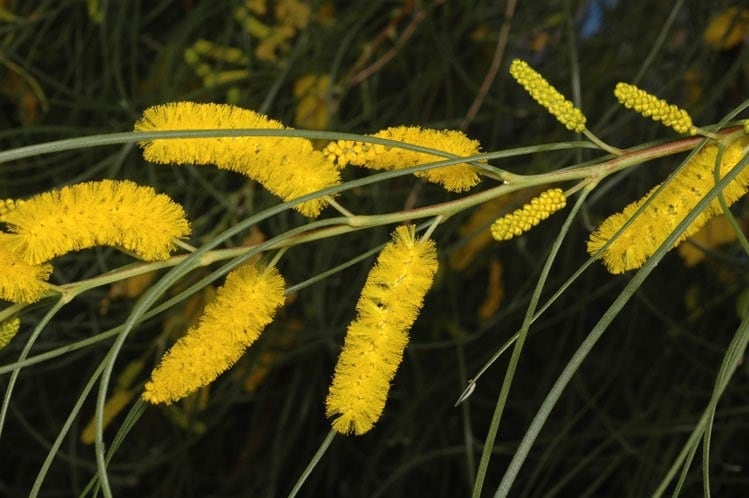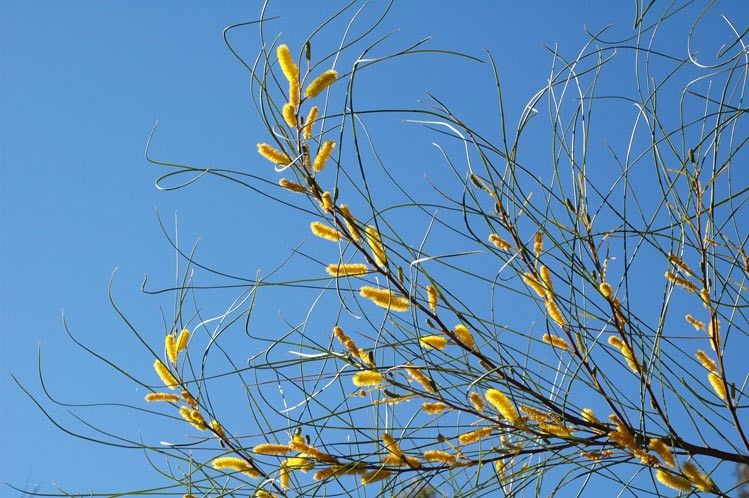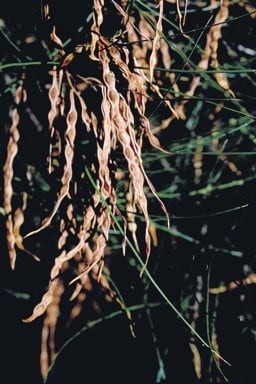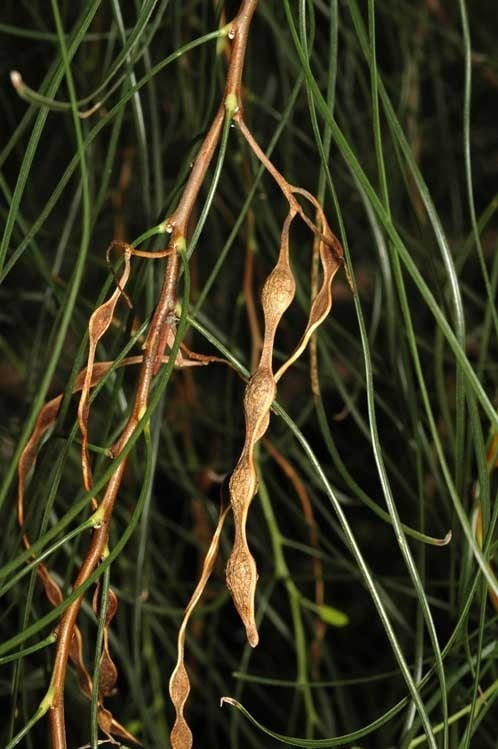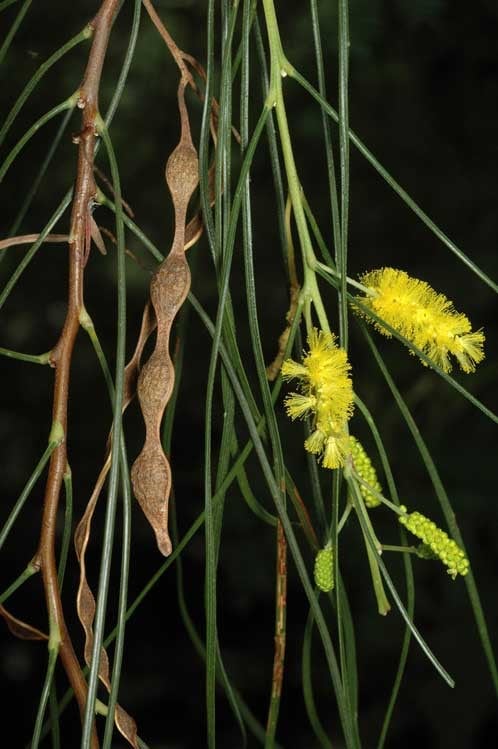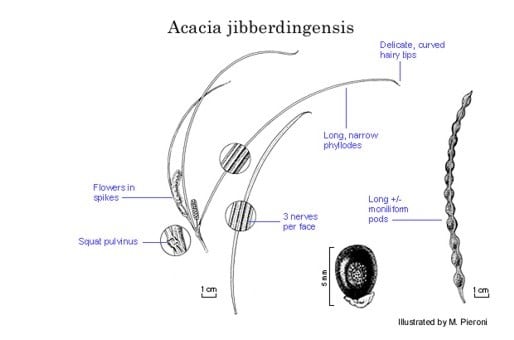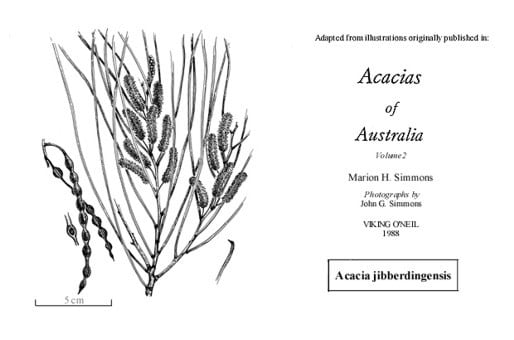Acacia jibberdingensis Maiden & Blakely
WATTLE
Acacias of Australia
Common Name
Jibberding Wattle
Family
Fabaceae
Distribution
Scattered from Mullewa and Jingemarra Stn SE to Peak Charles Natl Park with a single collection from Kathleen Valley (c. 350 km E of Jingemarra Stn), south-western W.A.
Description
Usually a shrub or small tree 2-4 m high. Branchlets ±angled and appressed-puberulous at least at nodes. Phyllodes patent to ascending, linear, straight to slightly curved, flat to terete, 15-32 cm long, 1-1.5 mm diam. or to 4 mm wide (flat form), acuminate, coriaceous, glabrous except margins commonly fimbriolate apically, prominently 8-nerved in all, 3‑nerved per face when flat; pulvinus distinct, transversely wrinkled. Inflorescences simple, commonly 1 per axil; peduncles 6-11 mm long, appressed-puberulous; spikes 20-35 mm long, 6 mm diam., golden; bracteoles spathulate. Flowers 4-merous; sepals 1/2 to fully united. Pods submoniliform, to 21 cm long, 4.5-7 mm wide, thinly coriaceous, glabrous. Seeds longitudinal, broadly elliptic, 4.5-5.5 mm long, glossy, black; areole pitted; aril formed of two loops of fleshy funicle.
Habitat
Grows mostly in granitic loamy sand near granite outcrops, usually in scrub and shrubland.
Specimens
W.A.: Wydgee Stn, J.S.Beard 7412 (MEL, PERTH); 12.9 km S of Kathleen Valley, D.Churchill 10862 (PERTH); Peak Eleanora, Peak Charles Natl Park, K.Newbey 6374 (CANB, PERTH); Giles Rock, B.H.Smith 346 (PERTH); 25.7 km from Morawa on Yalgoo road, B.H.Smith 499 (PERTH).
Notes
A collection from Mt Churchman (A.M.George 38, PERTH) is atypical in being recorded as a tree about 7 m high. Related to A. sessilispica which has consistently terete to slightly compressed, shorter phyllodes, sessile spikes and free sepals (or rarely joined basally). Sometimes confused with A. longiphyllodinea which has many-nerved phyllodes that are continuous with the branches, and wider, denser spikes of pentamerous flowers Also allied to A. karina and A. stanleyi and appears closely related to members of the ‘A. multispicata group’. The 4-merous flowers and the commonly fimbriolate-margined phyllodes of A. jibberdingensis indicate affinities to A. acuminata which has usually sessile spikes and phyllodes with more than eight nerves.
FOA Reference
Data derived from Flora of Australia Volumes 11A (2001), 11B (2001) and 12 (1998), products of ABRS, ©Commonwealth of Australia
Author
Minor edits by B.R.Maslin & J.Reid
R.S.Cowan
This identification key and fact sheets are available as a mobile application:
URL: https://apps.lucidcentral.org/wattle/
© Copyright 2018. All rights reserved.
